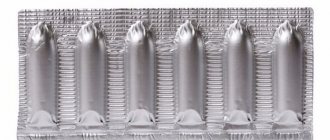Rumors that the amniotic sac is opened in maternity hospitals for everyone are somewhat exaggerated. However, this procedure is actually not uncommon. Many expectant mothers view this procedure as a rude and unnecessary interference in the natural process. Of course, if childbirth is proceeding normally, then there is no need to “help”, but sometimes it is necessary to intervene.
Yes, opening of the amniotic sac - amniotomy - is often performed. But for this there must be indications that are necessarily reflected by the doctor in the birth history.
Indications for opening the amniotic sac
The opening of the amniotic sac can be performed even before the onset of labor for the purpose of labor stimulation - induction of labor. In what cases it is necessary to artificially induce labor is described in detail in the article.
Amniotomy during childbirth is performed in the following cases:
— With a functionally defective amniotic sac. This is a flat fetal bladder, when the membranes of the bladder are pulled over the head. In this case, a pole in the form of a cone is not formed, which should be wedged into the cervix, so such a fetal bladder not only does not help normal labor, but also delays it.
- With polyhydramnios, since with it the uterus is overstretched, due to which its contractility is reduced. Due to the decrease in the volume of the uterus, contractions intensify. Usually, in a situation with polyhydramnios, after the release of amniotic fluid, a woman feels an improvement in her condition and it becomes easier to breathe.
- In case of independent rupture of the membranes, its membranes, stretched over the head, also need to be separated instrumentally, because when the membranes rupture, its lower pole becomes sluggish and does not perform its function.
— If labor is weak, the amniotic sac is opened for the purpose of stimulation. The stimulating effect is explained by the release of biologically active substances - prostaglandins, which promote contraction of the uterus during childbirth. Drug stimulation is started only after amniotomy, if it is insufficiently effective.
— In case of minor bleeding associated with abruption of the low-lying placenta (in case of massive bleeding, emergency surgery is performed). When the amniotic sac is intact, the membranes pull the placenta along with them and contribute to further abruption; opening the amniotic sac in this situation prevents further placental abruption and has a hemostatic effect.
- When the mother's blood pressure increases. After amniotomy, the uterus decreases in size due to the release of some amniotic fluid and a slight drooping of the head, resulting in reduced pressure on large vessels.
- If the cervix is dilated more than 6-7 cm, but the fetal bladder remains intact (some doctors recommend opening the fetal bladder when it is fully dilated). This may be due to excessive density of the membranes or their increased elasticity. If the amniotic sac is not opened, the period of pushing is prolonged, since such a amniotic sac interferes with the advancement of the head. Additionally, in rare cases, a baby may be born in the membranes. In this case, the child experiences a state of asphyxia (impaired breathing and oxygen starvation; the membranes, simply put, have a suffocating effect). A child born “in a shirt” is considered happy because he was pulled out of this “shirt” alive. Therefore, such situations must be prevented.
Operation description
For pregnant women, the mere mention of amniotomy raises serious concerns for the health of the baby, since most expectant mothers have little understanding of the procedure itself and its features.
Particularly impressionable women in labor are rendered faint by the instrument with which the operation is performed. At first glance, it really looks intimidating - a long narrow object with a curved hook at the end.
Amniotome - a tool for puncturing the bladder
Amnitome, as obstetricians call it, is made of plastic. It arrives at the department in sterile form and is disposed of after use. Decades ago, it was made from surgical steel and regularly sterilized.
The procedure itself lasts no more than 2 minutes. If amniotomy is performed already during childbirth, then the doctor waits for the height of the contraction and penetrates the uterine os with two fingers. They should come into contact with the membrane of the amniotic sac.
A doctor uses an amniotome to pick up the membranes
At this moment, the bladder is in a state of highest tension and, after being hooked by the amniotome, the membranes easily tear. The obstetrician moves them apart so that the water flows freely and he can assess the color of the liquid.
Highly clear or slightly cloudy waters will not cause concern, but yellowish or greenish tints will be a reason for an emergency caesarean section. Such colors indicate that the baby’s life is in danger and the course of natural childbirth needs to be changed.
I remember the first time I saw an amniote. It shocked me, and I even cringed internally, preparing myself for pain as the hook approached me. But I didn’t feel any pain or even the slightest discomfort. The fact is that there are no nerve endings in the membrane of the amniotic sac, so the puncture does not bring discomfort to women.
Complications of amniotomy
As with any, even the most harmless medical procedure, complications are possible with amniotomy, but in this case they are extremely rare.
Possible injury to the vessels of the fetal bladder and bleeding. There may be loss of umbilical cord loops. These complications are possible if the amniotomy is performed before the head is pressed against the entrance to the pelvis. The pressed head prevents the umbilical cord from falling out and avoids bleeding, since the vessels are also pressed. In addition, after an amniotomy, a woman is recommended to lie down for half an hour.
With polyhydramnios, it is necessary to control the rate of outflow of water, since with a rapid and sudden outflow, an arm or leg may fall out. Therefore, in cases of polyhydramnios, they first make a small hole and slowly release the water.
There is no need to be afraid of an amniotomy performed according to indications. This procedure is performed frequently, so the doctor is “experienced” with it, and complications are extremely rare.
Of all the stimulation methods, amniotomy is considered the safest method; opening the amniotic sac does not affect the child’s condition in any way. In addition, there are statistics that confirm that after amniotomy began to be widely used, complications during childbirth decreased. But, of course, this does not mean that it should always be used by everyone.
Who is indicated and contraindicated for amniotomy?
Not all women have their amniotic sac pierced, and only in the following cases:
- Full-term pregnancy from 38 weeks for a single pregnancy and 36 weeks for a multiple pregnancy.
- Head presentation of the fetus.
- Estimated body weight is more than 3 kilograms.
- Fully mature cervix and normal pelvic size.
- There are no contraindications to natural childbirth.
Indications
Like any operation, the bladder is punctured only according to the doctor’s indications and after a thorough examination.
The amnion is most often punctured
during postterm pregnancy, namely after 41.5 weeks. If a woman has not given birth to a child before this period, then continuing the pregnancy can be dangerous both for the fetus and for the woman in labor. The placenta begins to age, oxygen supply to the baby becomes worse, which is why children born late are usually diagnosed with hypoxia.
In addition, amniotomy is indicated in cases where urgent delivery is necessary. These include:
- Intrauterine death or fetal hypoxia.
- Premature placental abruption.
- Preeclampsia and polyhydramnios in a pregnant woman.
For some diseases in a woman, labor must be induced after reaching 38 weeks. For example, in case of Rh conflict between mother and child or severe chronic diseases of the woman
.
A special case for puncture of the bladder is the long preliminary period, when contractions occur over several days, but they never progress into labor. The cervix does not dilate, the woman in labor suffers from endless painful contractions, and the fetus suffers from hypoxia. In this case, amniotomy helps to give birth faster.
Contraindications
Despite all the benefits of such an operation, amniotomy has a number of contraindications, in which this procedure is strictly prohibited and doctors should choose a different method for delivery. Almost all of them are similar to contraindications for natural childbirth.
. Among them:
In the absence of contraindications, amniotomy does not threaten the condition of the mother and child and, contrary to popular belief, it is not painful at all. You should not refuse this procedure
, because if the doctor prescribed this operation, then there are good reasons for it. It’s worth thinking about how many women amniotomy has helped them give birth easily and quickly, and all doubts will immediately be dispelled. By fully following the instructions and advice of your obstetrician-gynecologist, you can be completely calm about the health of your child and be confident that the birth will be successful and without pain.
In an ideal labor process, amniotic fluid drains immediately before delivery itself, when the uterus opens 8 or more fingers. However, if stimulation of labor is necessary, or there are other indications, women in labor are prescribed an amniotomy.
Contraindications for bladder puncture
Puncture of the amniotic sac is an easy procedure with rarely complications. The operation significantly speeds up labor, but there are a number of contraindications:
- exacerbation of genital herpes - in this case, infection of the fetus is possible;
- the placenta is below the required level;
- pathological location of the umbilical cord loops, which can be injured during autopsy;
- there are contraindications to natural childbirth;
- incorrect position of the child (pelvic, transverse);
- scars on the uterus after cesarean section;
- pathologies of the cardiovascular system of the mother in labor;
- narrow pelvis of the expectant mother;
- child weight more than 4.5 kg;
- multiple pregnancy;
- hypoxia;
- folds of the vagina.
How long does labor last after a puncture?
The procedure directly affects the duration of labor if the body is ready.
Main features:
- the neck is open at least halfway, that is, 5 fingers;
- it is smooth and short.
Then the puncture will contribute to its rapid opening to the end, and therefore bring the birth closer. A few hours maximum – and the baby will be born. If stimulation with hormonal drugs is required, labor will be longer.
The main thing is that the child should not be without water for more than 12 hours. This is exactly the task facing maternity hospital workers and mothers.
Puncture without contractions
Very often, opening the organ in question in pregnant women causes great anxiety, since few people know how this manipulation is performed. The first step is to understand in what cases this procedure is mandatory, and when it is impossible to do without it. In any case, a woman should be aware of the fact that if the doctor told her about the need to puncture the bladder, then she should not refuse.
Often the bladder needs to be punctured because there is a certain threat to the baby’s life. Manipulation is carried out for various reasons, the most common ones being the threat of Rh conflict and late toxicosis. The bladder is also pierced if a woman has a disease such as diabetes, hypertension, or impaired kidney function.
Very often, doctors are forced to induce labor in this way in case of intrauterine death of a baby, in a pregnancy that is post-term, or in case of fetal hypoxia.
It also happens that contractions do not appear regularly and rarely. In this case, the woman in labor cannot give birth on her own. The opening of the cervix slows down greatly, and the baby cannot come out normally. And in the amniotic fluid there are prostaglandins, which greatly enhance labor. Therefore, they decide to perform an amniotomy. If the expected effect from such manipulation does not occur, then the woman in labor is injected with special medications that activate contractions.
This is an absolutely safe procedure. Complications occur very rarely. Manipulation is carried out only when there is great need, only with the permission of the woman in labor. The doctor should be advised of the potential consequences.
This may be fetal hypoxia, infection inside the womb (occurs very rarely), bleeding, weak heartbeat in the baby, or prolapse of the umbilical cord loops. And the most important thing is that after the bubble is opened, no more than 20 hours should pass until labor begins. The baby cannot be without water for a long time; it is dangerous for his life.
Consequences and risks
Women worry that manipulation may have consequences. If the obstetrician assesses the situation correctly, then there is no reason to worry.
What happens after the amniotic sac is punctured?
The procedure is an element of obstetric care, and therefore should enhance the process. Contractions of the uterus become more intense and lead to further dilatation of the cervix. First-born mothers feel increased pain, but those who give birth again experience relief. If everything is normal, half an hour after the bubble ruptures, the baby is born.
Is it harmful to pierce the bladder during childbirth?
In the absence of contraindications, amniotomy does not harm the mother and baby. In a situation where there is little fluid in the membrane and it is in close contact with the body, damage to the head occurs when the amniotic sac is punctured. But these are minor superficial scratches that heal quickly.
If there is no opening after puncture of the bubble, this is due to rapid effusion. This is usually observed with polyhydramnios or loose presentation. Such a situation can provoke undesirable consequences.
Complications:
- umbilical cord prolapse;
- incorrect insertion of the head;
- change in body position;
- premature placental abruption.
A sharp increase in labor for an unprepared baby can worsen his condition. Having lingered in the canal for a long period after the water breaks, the child experiences oxygen starvation. Such situations are rare and can be easily eliminated with professional management of childbirth.
Labor induction is used only for indications that pose a threat to the health and life of the mother and baby
In this case, the consent of the pregnant woman is taken into account, and contraindications to amniotomy are also taken into account. The procedure itself is painless and does not require anesthesia - there are no nerve endings on the fetal membrane
Opening the bladder takes a few minutes, significantly speeds up labor and is a good alternative to a caesarean section.
In utero, the child is protected by a special membrane - the amnion, filled with amniotic fluid. They protect it from shock when moving, and the shell prevents the upward penetration of infection from the vagina.
During childbirth, the baby's head is pressed against the cervix and a fetal bladder is formed, which, like a hydraulic wedge, gradually stretches the cervix and forms the birth canal. Only after this does it break on its own. But there are situations when the bladder is punctured before childbirth without contractions.
This procedure is not prescribed at the request of the woman or the whim of the doctor. Successful amniotomy is possible if certain conditions are met:
- the fetal head is presented;
- full-term pregnancy of at least 38 weeks with one fetus;
- estimated fetal weight more than 3000 g;
- signs of a mature cervix;
- normal pelvic size;
- There are no contraindications for natural childbirth.
Puncture without contractions
Very often, opening the organ in question in pregnant women causes great anxiety, since few people know how this manipulation is performed. The first step is to understand in what cases this procedure is mandatory, and when it is impossible to do without it. In any case, a woman should be aware of the fact that if the doctor told her about the need to puncture the bladder, then she should not refuse.
Often the bladder needs to be punctured because there is a certain threat to the baby’s life. Manipulation is carried out for various reasons, the most common ones include threat and... The bladder is also pierced if a woman has a disease such as diabetes, hypertension, or impaired kidney function.
Very often, doctors are forced to induce labor in this way during intrauterine death of a baby, during a pregnancy that is post-term, or during pregnancy.
It also happens that contractions do not appear regularly and rarely. In this case, the woman in labor cannot give birth on her own. The opening of the cervix slows down greatly, and the baby cannot come out normally. And in the amniotic fluid there are prostaglandins, which greatly enhance labor. Therefore, they decide to perform an amniotomy. If the expected effect from such manipulation does not occur, then the woman in labor is injected with special medications that activate.
This is an absolutely safe procedure. Complications occur very rarely. Manipulation is carried out only when there is great need, only with the permission of the woman in labor. The doctor should be advised of the potential consequences.
This may be fetal hypoxia, infection inside the womb (occurs very rarely), bleeding, weak heartbeat in the baby, or prolapse of the umbilical cord loops. And the most important thing is that after the bubble is opened, no more than 20 hours should pass until labor begins. The baby cannot be without water for a long time; it is dangerous for his life.
Carrying out the procedure
Puncture of the bladder before labor without contractions takes about 5 minutes. Before the procedure, a vaginal examination is performed, the condition of the woman and fetus is assessed, and the level to which the cervix has dilated is determined. If the birth canal is ripe, the doctor inserts special forceps into the open canal of the cervix. After the bladder is punctured, the physician inserts his fingers into the resulting hole so that the front part of the amniotic fluid flows out. After this, the doctor evaluates the amount and color of the water to determine the presence of hypoxia or intrauterine infection in the fetus.
The procedure is not accompanied by pain, since there are no nerve endings in the amnion. Fear may arise at the sight of a doctor with a metal instrument, but you should not be afraid. You should try to relax as much as possible, because tense muscles can cause discomfort. When puncturing the bladder before giving birth without contractions, the woman needs to lie still, without interfering with the doctor’s manipulations. The only sensation that will accompany the procedure is amniotic fluid flowing out at a warm temperature.
Amniotomy is never performed by doctors just like that without significant indications. The need for intervention is influenced by many factors, and medical staff primarily act in the interests of the child and the woman in labor. If you follow the doctors' instructions, the process of puncturing the bladder will be painless, and childbirth will return to normal and safe.
During normal labor, the waters drain on their own. But it happens when the contractions become stronger, pushing will soon come, but the waters have not broken. In such a situation, the obstetrician decides to get involved in the process. Puncture of the bladder before childbirth is called an amniotomy.
Inside the mother's body, the baby is protected by a membrane called the amnion, filled with fluid. Thanks to him, the baby is protected from influences and bacteria from the external environment. When a puncture or standard rupture occurs, the uterus begins to push out the fetus. Contractions arise and pushing appears. Puncture of the amniotic sac without contractions is carried out in emergency cases. The operation takes place using a hook during the period of incomplete dilatation of the cervix. This is done so as not to hit the baby's head. Autopsy before labor is divided into types.
Types of amniotomy:
- antenatal - before delivery, so that contractions appear;
- early – the cervix is open by 7 cm;
- timely – opening of the uterus by 10 cm;
- delayed - opening of the bladder during childbirth. Carried out to prevent fetal hypoxia and bleeding in a woman.
About 10% of women in labor experience an amniotomy. When a woman hears about the procedure, she gets very scared and feels negative. After all, mom has no idea that this is right and necessary. Thanks to contractions, the cervix opens and the fetus moves towards the birth canal. But the opening is due to a water bubble. Active contraction of the organ occurs, the pressure inside the uterus rises. The waters go down, causing the cervix to dilate.
Basically, the rupture of the membrane goes away when the uterus is fully dilated. First the first waters come out. The woman in labor does not feel anything because there are no nerve endings in the bladder. There are women whose waters break before labor. This is noticeable because a lot of liquid comes out. But the membrane can burst at the point of contact with the wall of the uterus. Here water flows out in small quantities, in the form of drops.
If your water breaks at home, you must urgently go to the maternity hospital. Moreover, remember the time when this happened in order to provide this information to the obstetrician
You should pay attention to the smell and shade of the water. Under normal circumstances, the liquid is clear and odorless
If the water does not break, it takes much longer. Accordingly, it is necessary to artificially pierce the bubble.









